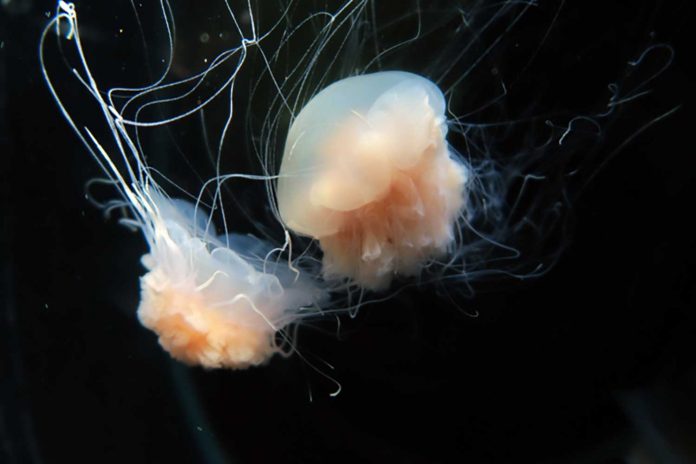Hainan’s tropical beaches are stunning. With an annual average sea temperature of approximately 27°C, they’re a magnet for beach goers, but they’re also home to jellyfish. While most stings aren’t dangerous, some can hurt like crazy or even cause serious symptoms. Whether you’re swimming, snorkeling, or just walking the shoreline, it helps to know what to expect, and how to stay safe.
Why Are Jellyfish Here, Anyway?
Jellyfish aren’t just random ocean floaters. They’re part of the food chain, eating plankton and sometimes being eaten by fish and turtles. In summer, when the water gets warmer and richer in nutrients, jellyfish numbers spike. This is called a bloom, and it can affect fishing, tourism, and swimming.
Meet the Locals: Jellyfish Species Around Hainan
Here are some of the jellyfish you might see in Hainan’s coastal waters, some beautiful, some best admired from a distance.
Moon Jellyfish (Aurelia aurita)
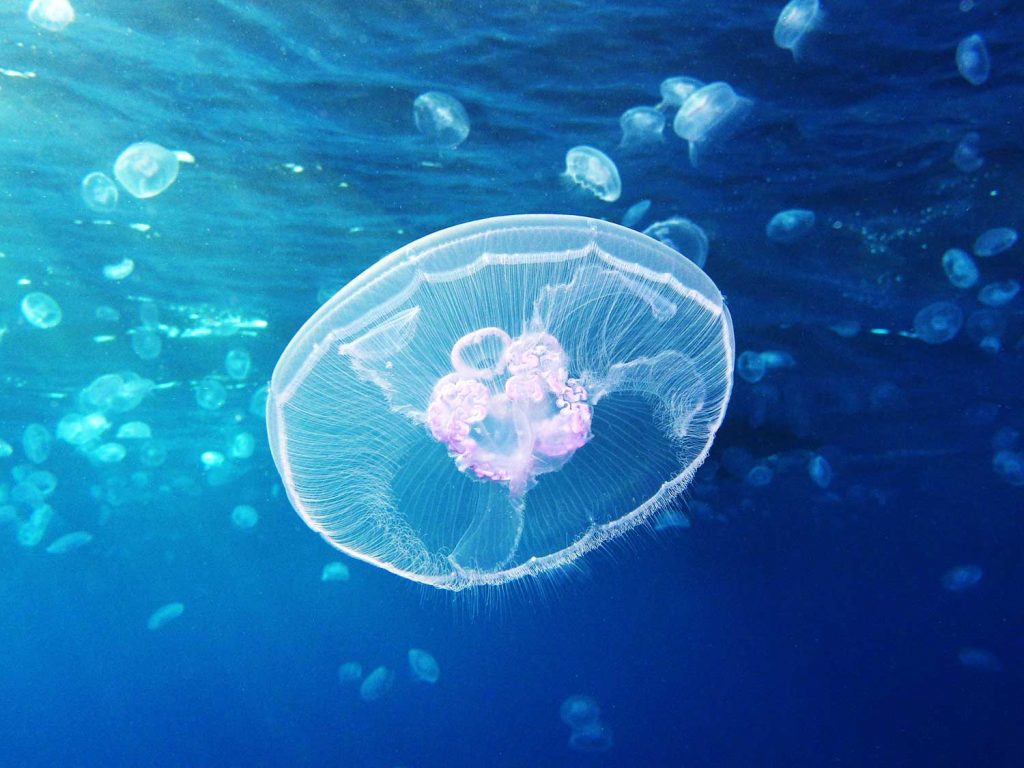
Common in warm seas, these translucent jellies look like floating dinner plates. Stings are mild, but large groups can be a nuisance to swimmers. Peak season: Late summer.
Blue Button (Porpita porpita)
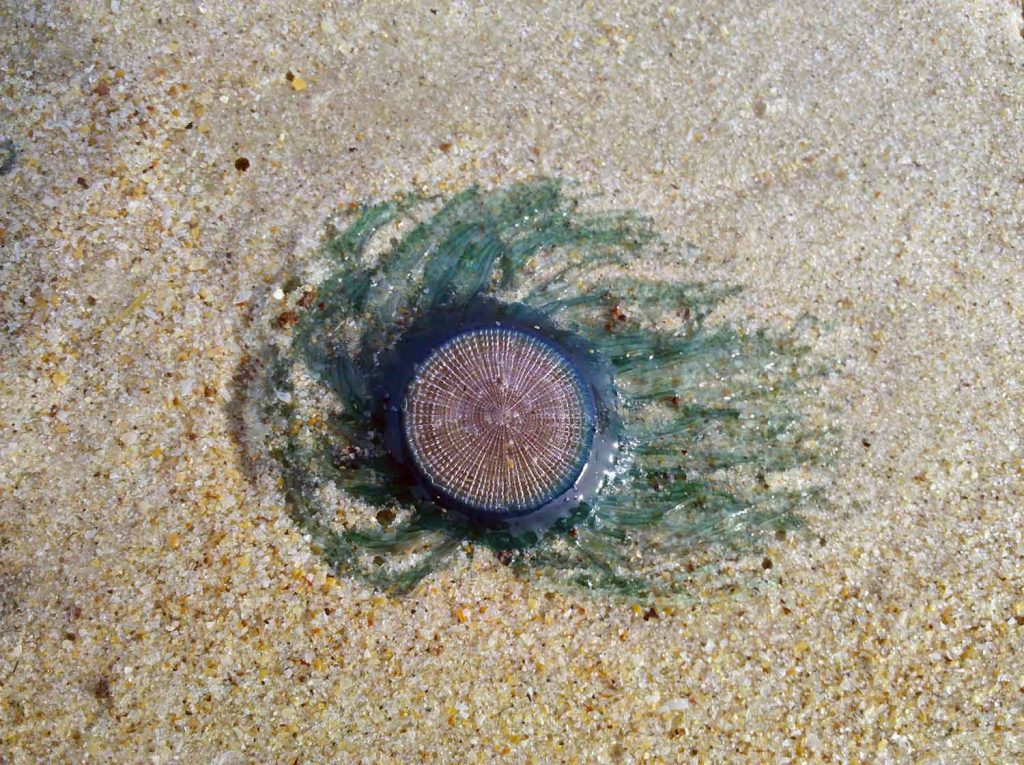
Not technically a jellyfish but just as stingy. These bright blue, disc-shaped creatures float on the surface in clusters. Contact can cause itchy, bumpy rashes that last for hours or days in some cases. They’re more common during heatwaves or after storms.
Acromitus flagellatus
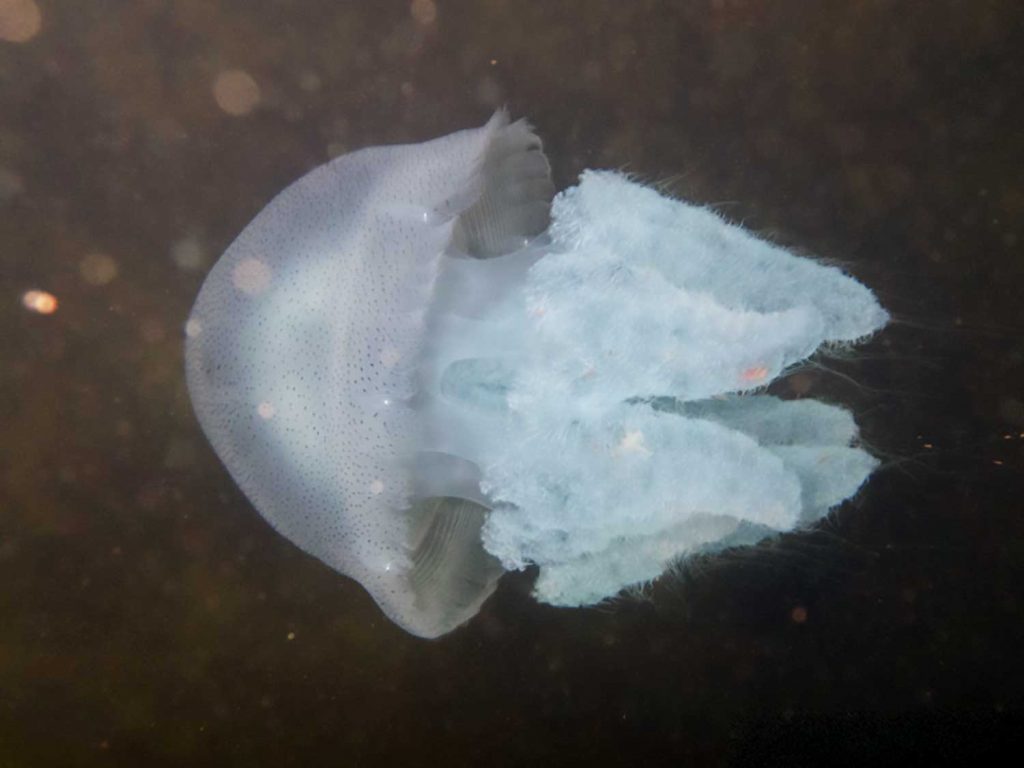
Usually found in mangroves and estuaries. The sting is mild, but fishermen handling nets sometimes get zapped. Not usually a beach concern.
Lion’s Mane Jellyfish (Cyanea nozakii)
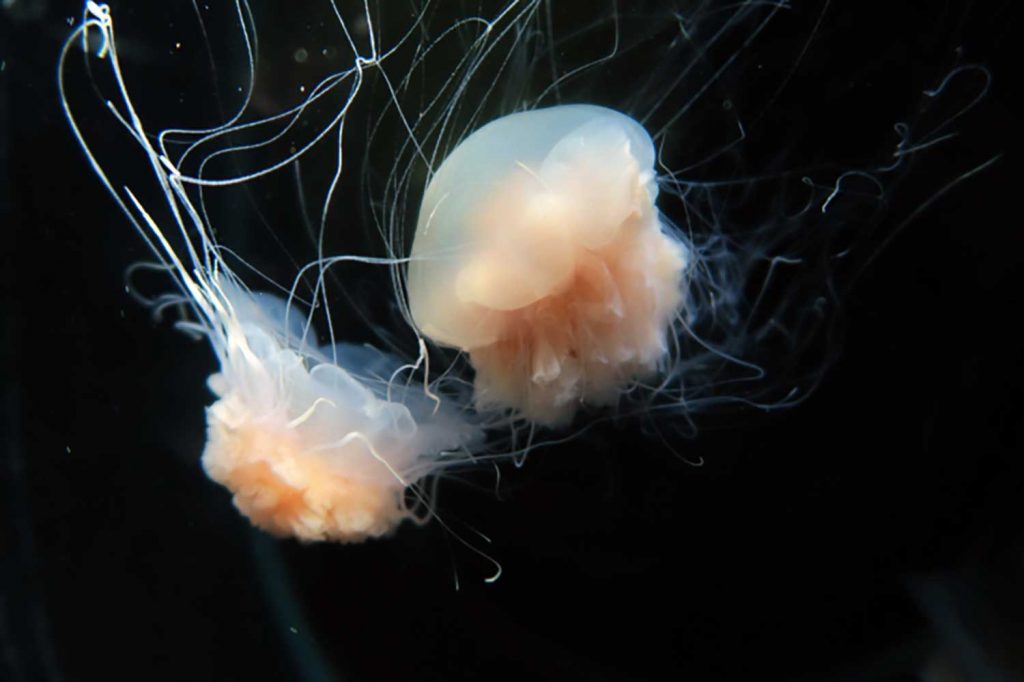
Mostly found farther north but occasionally drift towards Hainan. These have long tentacles and a painful sting. Medical attention may be needed.
Box Jellyfish (Tripedalia maipoensis)
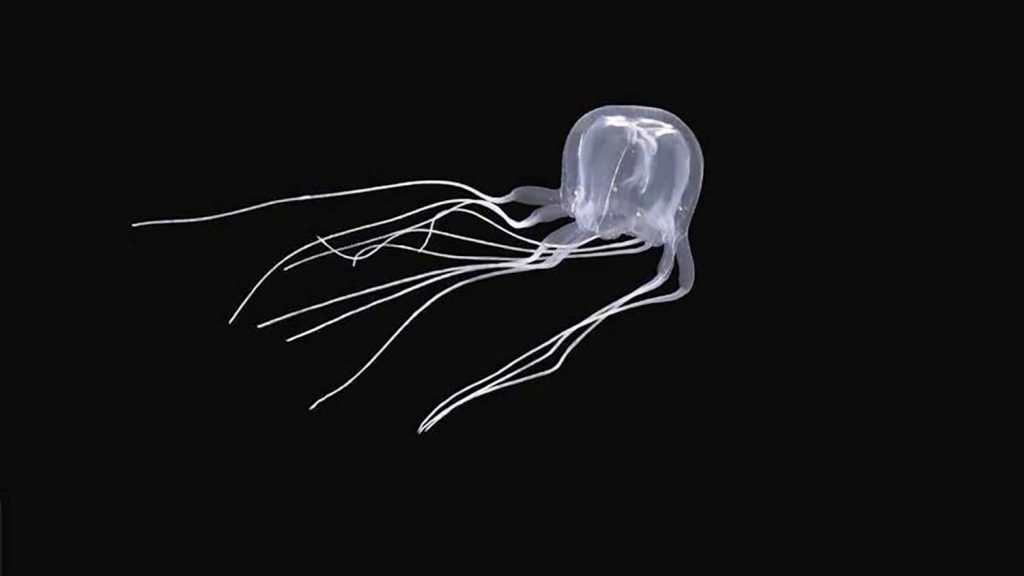
Recently discovered near Hong Kong. It hasn’t been confirmed in Hainan yet, but due to its venom, officials are monitoring for its presence. It is not yet considered a local threat however, but better safe than sorry.
When Are Jellyfish Most Active?
Jellyfish season in Hainan runs from April to October. Warmer water, changing tides, and tropical storms all play a role in bringing them closer to shore. After typhoons and summer storms, it’s not unusual to find stranded jellyfish on the beach.
High-risk times: Early morning and late afternoon, when jellyfish rise closer to the surface.
What Happens If You Get Stung?
Most jellyfish stings in Hainan cause mild to moderate skin irritation:
- Burning sensation
- Redness
- Welts or bumps
But in a few cases, especially with larger or more venomous species, people may experience:
- Muscle cramps
- Nausea
- Breathing difficulties
- Allergic reactions
Call a doctor or go to a hospital if symptoms go beyond skin irritation or don’t improve.
How to Prevent Stings
Here’s how to lower your risk while enjoying the water:
- Wear protective gear: If you’re snorkeling, a stinger suit or long-sleeved swimwear can reduce contact by 90% or more.
- Skip risky times: Avoid swimming at dawn or dusk.
- Watch the shoreline: Never touch beached jellyfish—even dead ones can still sting.
- Wear shoes: Protect your feet from jellyfish fragments hidden in seaweed or sand.
First Aid for Jellyfish Stings
If you do get stung, act fast:
- Don’t touch the tentacles with your hands. Use tweezers or the edge of a credit card to gently remove them.
- Rinse with seawater (not freshwater). Freshwater can make stings worse.
- Soak the area in hot water (about 45°C, or as hot as you can safely tolerate) for 20 minutes. This helps break down the toxins.
What Not to Do:
- No vinegar or alcohol: While it is generally recommended not to use vinergar or alcohol as these can actually make some stings worse, the recommendation to avoid vinegar is not universally applicable. Vinegar is commonly used for box jellyfish stings to neutralize venom, though it may worsen stings from other species..
- No pee: Despite the myth, it doesn’t help and might cause more irritation.
Know When to Seek Help
Go to a hospital if:
- The pain worsens after an hour
- The area becomes red and swollen the next day
- You experience chest tightness, dizziness, or trouble breathing
- The sting was near your eyes or mouth
Jellyfish are a natural part of Hainan’s marine life. While they can be annoying, and occasionally dangerous, they’re not a reason to avoid the beach. A bit of knowledge and a few precautions go a long way toward making your trip sting-free.
Related article: Why Wuzhishan National Park Should Be on Your Bucket List




